
All categories
Featured selections
Trade Assurance
Buyer Central
Help Center
Get the app
Become a supplier

(36 products available)



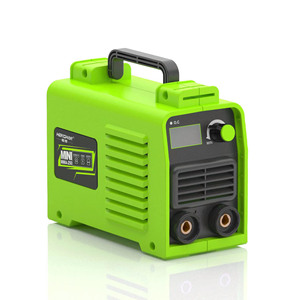





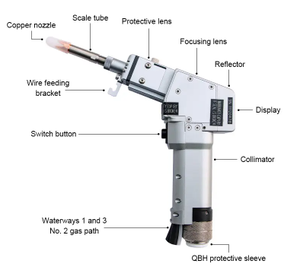

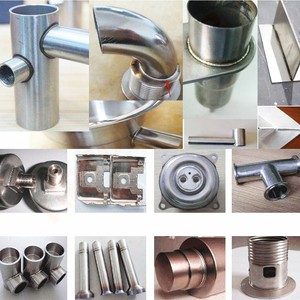


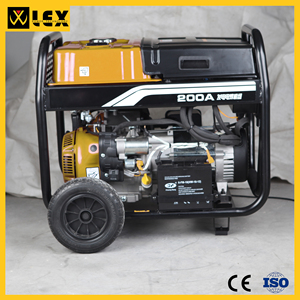

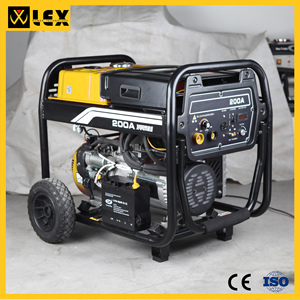

















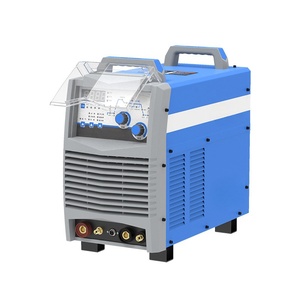


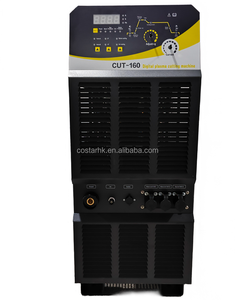




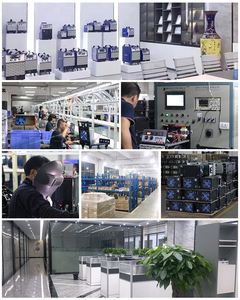
Various kinds of welding inverter schematic exist. They function according to the welding technology applied in each type of welding.
Metal Inert Gas (MIG) Welding
MIG welding goes by other names, such as GMAW (Gas Metal Arc Welding) or MIG (Metal Inert Gas). It uses a few basic elements in its operations. These include a continuously fed wire electrode, shielding gas, and an inverter-based power supply. The wire electrode is fed through a welding torch into the weld pool. The resultant arc melts both the wire and the workpiece. This leads to the creation of a joint. The inverter-based power supply helps regulate the electrical current. It ensures that the wire feeding remains consistent. While MIG welding is mainly used for thin metal working, it is also ideal for various materials and thicknesses.
Tungsten Inert Gas (TIG) Welding
TIG welding is also called GTAW (Gas Tungsten Arc Welding). It is among the most precise types of welding. It usually involves the use of a manually fed tungsten electrode along with an inverter and shielding gas. These elements contribute to an arc creation. TIG is sought after for its ability to create super clean and strong welds. It makes it ideal for working on thin metals and delicate pieces. One thing that makes this kind of welding stand out is that it can be done without filler material. That means it is suitable for tasks requiring high detail. Such tasks include welding of aircraft components.
Stick Welding
Stick welding goes by another name, SMAW (Shielded Metal Arc Welding). It is the simplest and most commonly used welding. So, it suits both amateur and professional welders. One of its major components is the electrode coated in flux. It produces a slag that protects the weld pool from contamination. Normally, the flux coating will be applied to the electrode by using a direct current (DC) or alternating current (AC). The welding inverter circuits will then help convert the main power supply into a suitable output for smooth welding. Although production tends to be slow compared to other types of welding, stick welding proves to be very versatile. It can be applied to a variety of materials in outdoor conditions because it is less sensitive to environmental factors.
Flux-Cored Arc Welding (FCAW)
FCAW is also similar to MIG welding. But unlike MIG welding, FCAW uses a tubular wire filled with flux. The flux then generates a protective slag. It protects the weld pool against impurities. This type of welding can either be carried out with gas (G-FCAW) or without gas (FG-FCAW). In all cases, welding inverters typically adjust the current and voltage for proper wire feeding and arc stability. Generally, flux-cored welding is appealing for its speed and ability to work with contaminants. It makes it suitable for thick metal structures in outdoor environments.
An ideal inverter welders schematic features distinct components performing specific functions. For better understanding, these components are grouped in different categories. Here are the categories:
Power Supply and Rectification
Typically, welders come with an alternating current (AC) power supply connected to the main power line. This AC current will then be transformed into direct current (DC) through rectification. There are various types of rectifiers. The most common ones are silicon-controlled rectifiers (SCRs) or diodes. People favor SCRs due to their ability to provide variable control of the output current. Afterward, smoothening filters eliminate the current fluctuations. The result is a steady DC output.
Output Control and Modulation
This part is key since it influences the welding current and voltage. The main output control method is Pulse Width Modulation (PWM). This way, the inverter can regulate the output to achieve desired welding parameters. This regulation guarantees flexibility in welding distinct materials and thicknesses. Adjustable resistors and high-frequency transistors are among the components responsible for PWM.
Inductor and High-Frequency Oscillator
A typical welding inverter will also have an inductor and high-frequency oscillator. They are responsible for generating a high-frequency output. The output will then assist in controlling the output current. In effect, it improves the stability of the arc during the welding process. This stabilization is crucial when welding thin materials where the slightest variation in heat can cause warping.
Control Circuit
A control circuit will normally use microcontrollers or other electronic components. They ensure the inverter operates within its desired parameters. This design helps produce real-time feedback. Thus, it allows the inverter to adjust its output based on welding conditions. This adjustment results in optimum performance.
Cooling System
It is without a doubt that welders can reach unbelievably high temperatures during operations. That is why they are fitted with cooling systems. The most common ones are fans or heat sinks. They will be responsible for dissipating heat. These systems will maintain the internal components' temperature at a safe level. Often, thermistors are integrated to monitor temperature. They will then trigger the cooling system once there is an increment in heat.
Welding inverters are vital for their versatile application in diverse industrial settings. They range from construction and automotive repair to more sophisticated manufacturing processes. Here is how these inverters come in handy in various scenarios:
Construction Industry
There is a great demand for welding machine in the construction industry. People use them to build structural steel frameworks, reinforce concrete elements, and assemble metal structures. The portable nature and power efficiency of inverter welders, therefore, make them ideal for working on remote job sites with fluctuating power supplies. Such an ability allows them to perform tasks like overhead welding on beams, plate work, and pipe fitting, which are commonly found in most construction projects.
Automotive Repair and Manufacturing
In the automotive world, these inverters are particularly important. Auto repair shops use them to carry out spot welding on car chassis, MIG welding on exhaust systems, and TIG welding on delicate engine components. Inverters help maintain the desired voltage levels. It ensures that the welds are strong and reliable, hence suitable for automotive safety.
Manufacturing of Aerospace
People have a preference for TIG welding in the aerospace realm. That is because it produces high-precision welds on critical components made of lightweight materials. Here, inverters are vital for generating a stable and minimal heat input. It ensures the integrity of airplane parts is maintained without warping or weakening the metal. This feature makes inverters indispensable in the production and repair processes within this highly regulated industry.
Shipbuilding
In this industry, welding inverters do well in their ability to handle thick materials. They make them ideal for creating strong, waterproof seams on steel hulls and decks. The inverters' flexibility allow them to switch between different welding techniques. Some of them include flux-cored arc welding and stick welding. They make them suitable for diverse applications, including structural welding, pipe installation, and repairing underwater equipment.
Art and Sculpture
In the sculpting world, artists create intricate metal sculptures. These sculptures include abstract designs, animal figures, and functional art pieces with the help of inverters. These devices also allow for precision control over the welding process. This capability enables artists to join thin metal sheets or wires without distortion. Therefore, the welds are cleanly made, and the final products possess aesthetic qualities that are maintained, making them preferable for sculptural work.
There is no doubt that the longevity and efficiency of welding inverters depend on some level of regular maintenance and timely repairs. Here is a comprehensive guide on how to do it:
Regular Inspection
For optimal operation, people should always do a monthly inspection of their welding inverters. During the inspection, they need to check for visible damage. Any internal component wear will affect the machine's overall functionality. It is also essential to assess cable connections. Loose or corroded connections not only cause power loss. They also pose a safety risk.
Cooling System Maintenance
Welders usually operate under high-temperature conditions. So, in most cases, they are ever fitted with cooling systems. Don’t forget to always ensure that the coolant levels are adequate. They should also be free of any debris or blockage. Failure to do this will lead to overheating and subsequent damage to the internal components. It is also advisable to clean the heat sinks and fans often. Use compressed air or a damp cloth. Never use a damp cloth that will restrict airflow.
Component Replacement
Over time, components like diodes, transistors, or capacitors may wear out. So, it is imperative to always replace worn-out parts as soon as possible. Doing so will ensure that machine keeps operating efficiently. Further damage to the inverter can occur with continued operation in this state. It also increases repair costs.
Software and Firmware Updates
Some welding inverters come with programmable logic controllers (PLCs). Clearly, these inverters require regular software updates to maintain operational efficiency. It is advisable to always consult the manufacturer’s guidelines for such updates.
Professional Repairs
Ideally, inverter repair should always be with professionals who understand the intricate electronic components involved. These are people with experience who can quickly identify issues. They also have access to OEM parts. Moreover, they offer warranties on their services. Such warranties act as a security. They ensure that any subsequent malfunction that may occur within the timeframe won’t incur additional costs.
Yes. Thanks to their versatility, inverter welders can do wonders on metal materials like carbon steel, stainless steel, aluminum, and more specialized alloys. It makes them indispensable for different metalworking projects.
Absolutely. One should always take general welding precautions such as using personal protective equipment (PPE) like welding helmets, gloves, and protective clothing. Additionally, ensure proper ventilation in the working area to prevent exposure to harmful fumes.
Of course, inverters do have flexibility. They are capable of supporting various welding methods like MIG, TIG, Stick, or plasma cutting. This ability makes them adaptable to different metalworking requirements, which boosts their overall efficacy.
When choosing one, remember to factor in the power output, welding type compatibility, duty cycle, weight, and additional features. These factors significantly affect the machine's performance and suitability for specific tasks.
The maintenance period of these inverters is usually determined by their usage intensity. Regular checks and servicing are recommended as a general rule of thumb. Particularly after heavy use, it is best to perform routine maintenance.